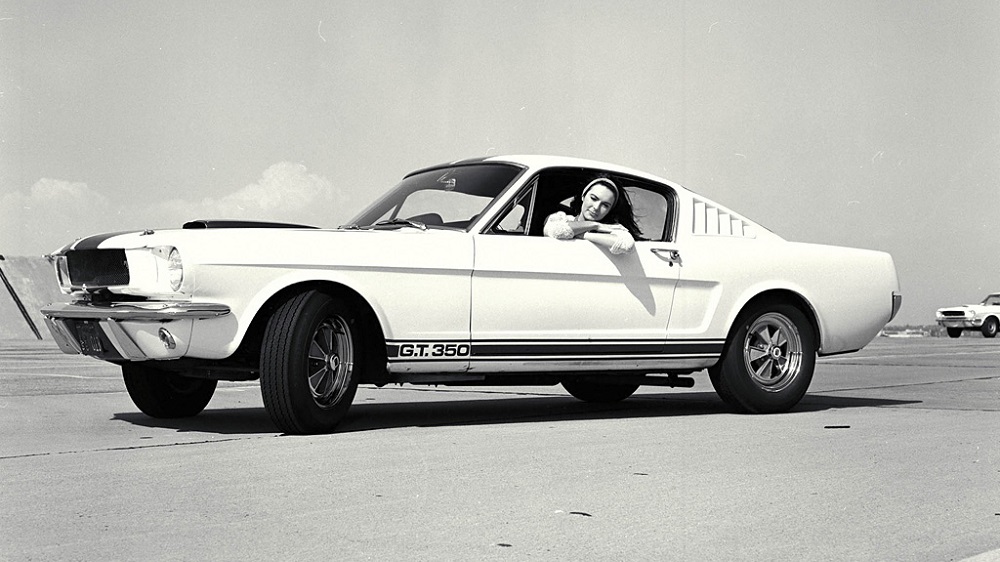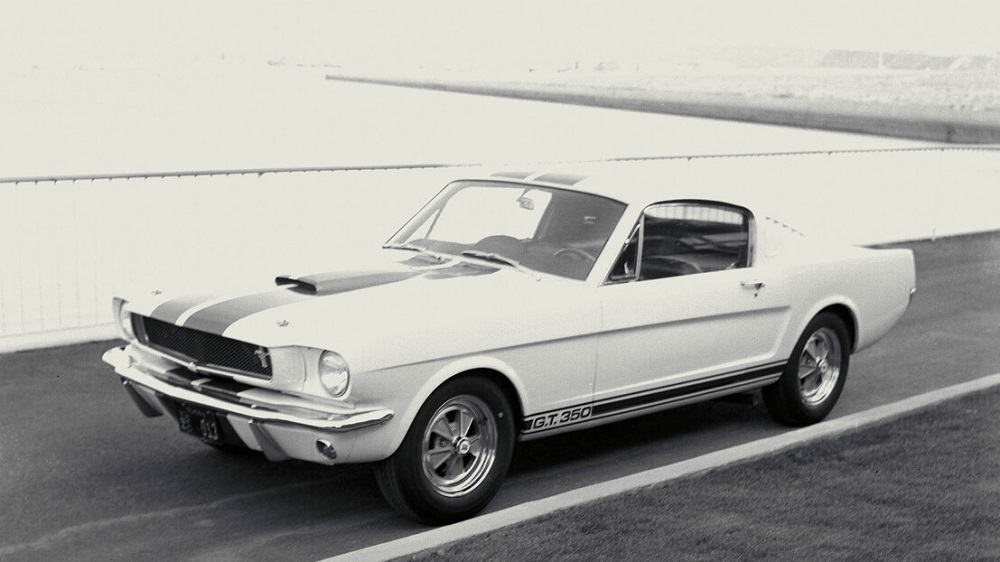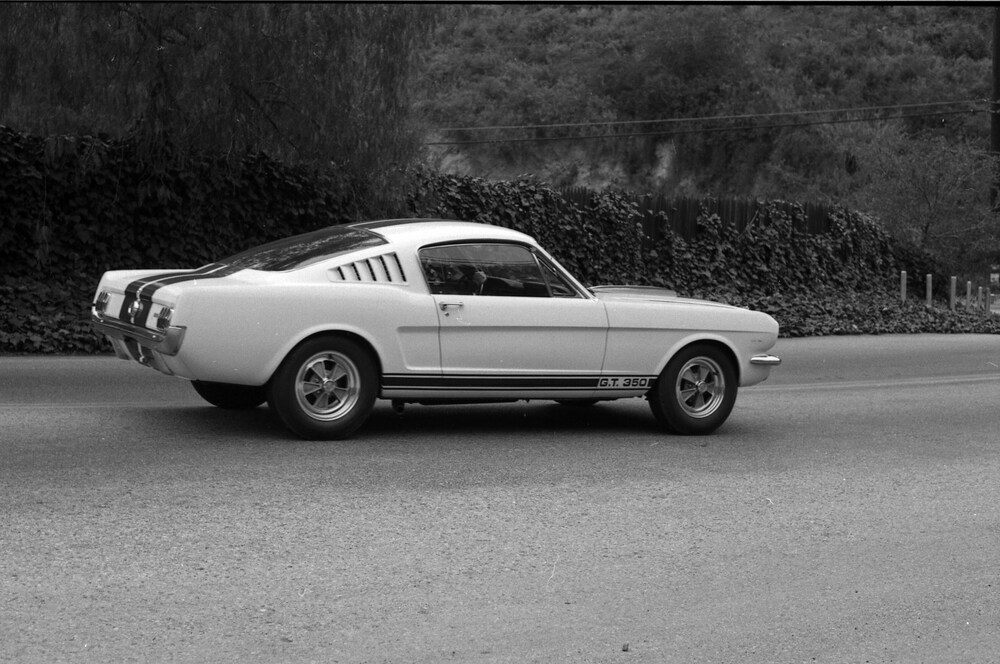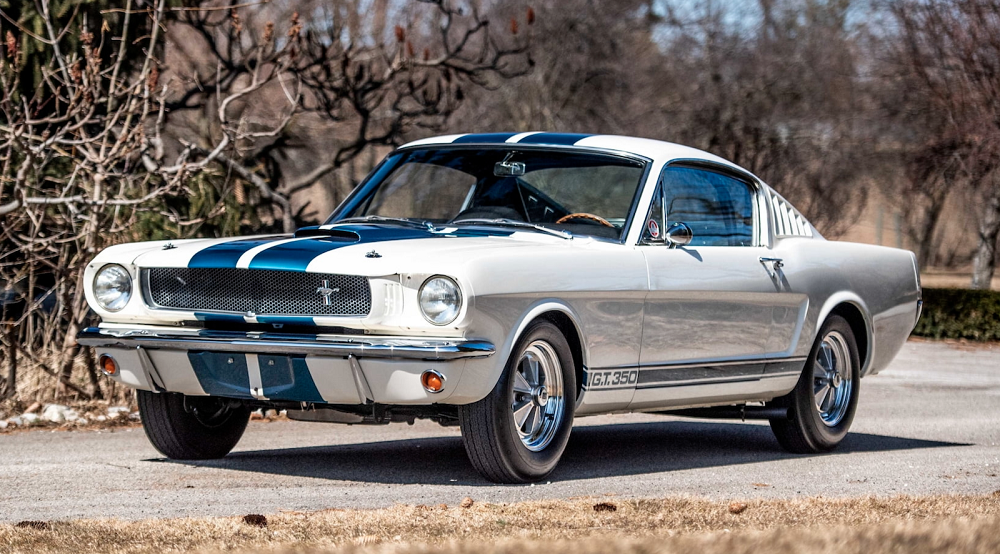1965 Shelby GT350: The Original Race Horse
From showroom to racing circuit: an overview of the 1965 Shelby GT350, the original factory-built race Mustang that started it all.
For almost six decades, the Mustang nameplate commanded respect and infamy within the touring car racing sphere. Rivaling the likes of the Porsche 911, Mustangs found their way onto podiums in everything from grassroots full-stock racing to the highest levels of motorsports. Throughout the years, Ford released a continuous stream of “race-ready” Mustangs. A tradition they proudly continue with the all-new 2025 Mustang GTD around the corner. And all of these vehicles, and the racing lineage that they created, owe their existence to one very special vehicle: the 1965 Shelby GT350, and its creator, Carroll Shelby.
Most of you likely know the story behind Shelby. He was a former racing driver, contracted to work with Ford on their GT40 program. Alongside this, he ran Shelby American, a specialized automaker responsible for the ubiquitous Cobra. Well, with the SCCA picking up speed rapidly during the early 1960s, and the Mustang debuting to incredible sales, Ford had an idea on how to capitalize on its publicity as an affordable sports car. They set out to build the first ever fully race-ready homologation special Mustang, a task appointed to Shelby himself.
The SCCA and Mustang’s Meteoric Rise to Prominence
The Mustang itself promised something which, up to this point, was virtually unheard-of in the US. Essentially, the Mustang’s philosophy boiled down to combining the “People’s Car” mentality of a Volkswagen, with the sportiness of a Corvette. In a sense, it was a very early example of a modular car, where you’d walk into the dealership and you could walk out with either a base-model 170c.i. six, or a fully-loaded GT 289 HiPo. Superficially, they resembled one another, being the same make and model. But they handled like completely different vehicles, which was crucial in its early success. It was truly a “jack-of-all-trades” car, and thanks to its lightweight body, perfectly suited to SCCA competition. In these early days, a wide variety of vehicles populated the grids, the Corvette being the most prominent American entry. But Ford saw a lot of potential in the Mustang as a worthy competitor to the Corvette. Not the least of which because the Mustang punched well above its weight.
Early SCCA competition placed heavy restrictions on vehicles. Engines, suspension, and running gear had to be stock. In fact, weight reduction provided the only real wiggle-room. And to homologate your car, you needed 100 or more examples of that trim produced in roadgoing form. So if you produced, let’s say, a Mustang dedicated to racing, you also had to sell 100 so-equipped models off the showroom floor. Since factory racing was still hush-hush at the time, Ford outsourced the production to Shelby American, providing 562 stock 1965 Mustangs equipped with a K-code 289 HiPo and 4-speed manual transmission only.
Creating a Legend
Shelby modified these Mustangs first and foremost through lightening. The bodies were stripped of all creature comforts, so no back seat, heater, power steering, or any soundproofing. Coupled with side-exit exhausts, it’s fairly obvious that these Mustangs weren’t designed with grocery-getting in mind. Alongside this, Shelby implemented a number of other modifications as well. Starting from the back, the battery was relocated to the trunk, and the spare tire moved to the now-absent back seat position. Shelby American altered the suspension in a number of ways and put in a limited-slip differential. And they installed a new Borg-Warner T10 4-speed manual with an aluminum casing to save more weight. All this coupled to a modified 289 Hi-Po with “Hi-Riser” intake manifold, married to a 715 CFM manual-choke Holley carburetor. In total, the package upped power to just over 300 horsepower, shifting a lithe 2800 pounds.
Shelby initially produced three prototypes: one street version, and two racing versions, dubbing them GT350 and GT350 R, respectively. Fun fact: this first street car was actually fitted with mismatched wheels on either side. So that when it was photographed, it appeared at a glance to be two different vehicles.
GT350 Production and Racing
All 1965 GT350s bore a very distinct look, owing to the unique fiberglass hood with scoop for the intake manifold, side-exit exhausts, and paint scheme. In its initial production, all GT350s came in Wimbledon White with the side decals; Le Mans stripes were optional. In fact, very few street cars came from Shelby with these stripes, though many owners added them after the fact. As mentioned before, racing variants bore the name GT350 R, and featured minimal modifications over the standard GT350. In fact, outside of a roll cage and tires, you really didn’t need to do much to a GT350 to get it race-ready for the SCCA.
And race-ready, it was. The GT350 proved such a savage automobile that it cemented the “Ponycar” as the new standard for professional touring car racing in the US. Its engine came under the allotted 5.0L displacement guidelines, yet thanks to its balance and lightness, dominated the circuits for several years. Essentially, the GT350 paved the way as the first “Lotus Elise” of the racing world. That is, it did the “simplify, add lightness” before it was cool.
The GT350’s Lasting Impression
As mentioned before, a total of 562 of these Mustangs rolled out of Shelby’s doors, well exceeding the 100 minimum. And despite their lack of creature comforts, they were well-loved. Probably due to customers having no presumptions as to what they were buying being anything other than a turnkey race car. At $4,547, Shelby marketed them at almost $2,000 over the base-model Mustang. Which is a little over $44,000 in today’s money. For a car with no sound-deadening, heat, or power steering. But you didn’t buy a GT350 to get groceries. You bought it because it smoked just about everything else on a racing circuit.
A legacy that continues to this day, in more ways than one. Not just in the GT350’s progeny, either directly through Shelby or with the likes of the GTD. But also, because in spite of being nearly 60 years old, these machines are still really fast. They still compete on racetracks in heritage classes, sometimes for hours on end. Which is not only a testament to their longevity, but also their cultural and spiritual relevance in the world of motorsport. Simply put, the Mustang nameplate owes its fame and notoriety, in no small part, to this car.
Images courtesy Ford Media Center and the Ford Heritage Vault





